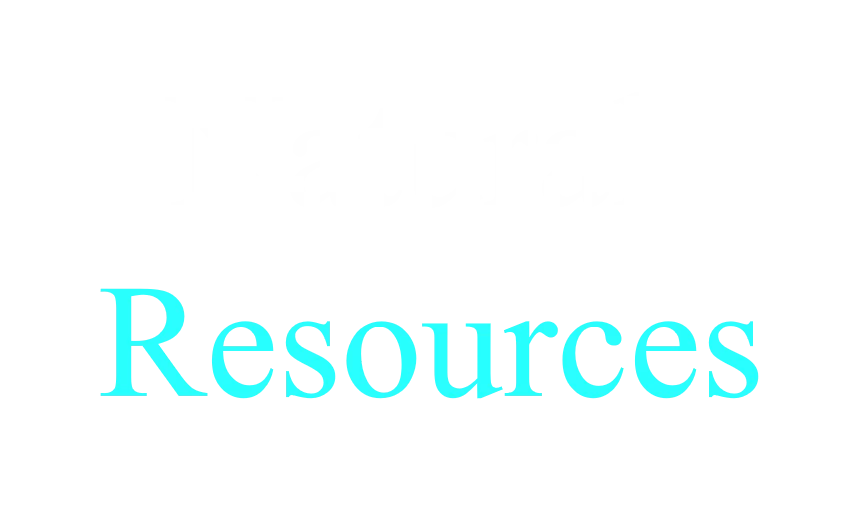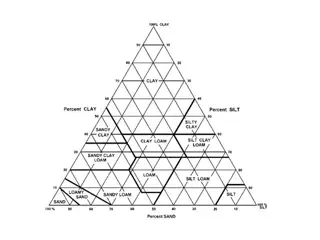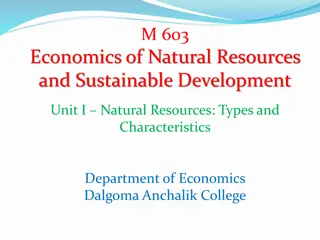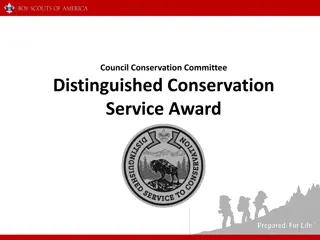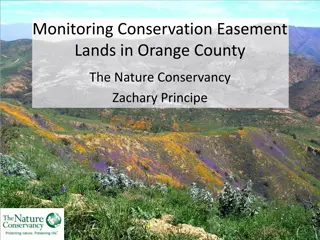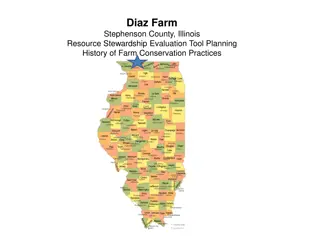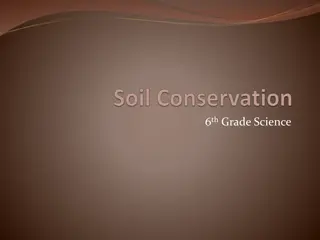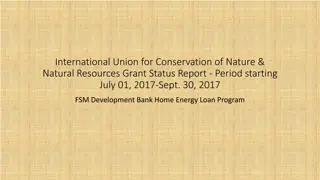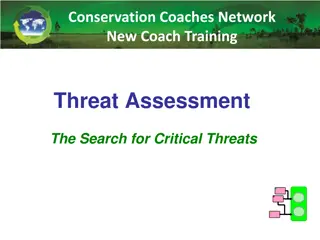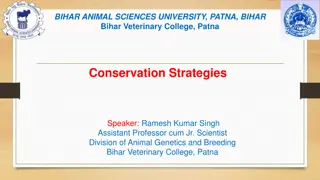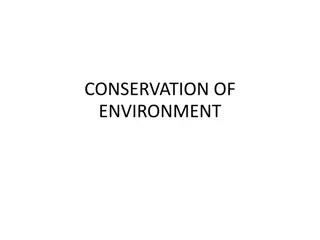Natural Resources and Conservation
Natural resources are essential materials found in the environment that are crucial for human existence and development. Learn about renewable and non-renewable resources, the importance of conservation, and ways to preserve these resources for future generations.
Download Presentation

Please find below an Image/Link to download the presentation.
The content on the website is provided AS IS for your information and personal use only. It may not be sold, licensed, or shared on other websites without obtaining consent from the author.If you encounter any issues during the download, it is possible that the publisher has removed the file from their server.
You are allowed to download the files provided on this website for personal or commercial use, subject to the condition that they are used lawfully. All files are the property of their respective owners.
The content on the website is provided AS IS for your information and personal use only. It may not be sold, licensed, or shared on other websites without obtaining consent from the author.
E N D
Presentation Transcript
StudyMafia.Org Natural Resources Submitted To: Studymafia.org Studymafia.org Submitted By:
Table Contents Definition Introduction Types of Natural Resources About Resources Why Conserve? Ways to Conserve Conclusion 2
Definition Natural resources can be defined as the resources that exist (on the planet) independent of human actions. 3
Introduction These are the resources that are found in the environment and are developed without the intervention of humans. Natural resources are naturally occurring materials that are useful to man or could be useful under conceivable technological, economic or social circumstances or supplies drawn from the earth, supplies such as food, building and clothing materials, fertilizers, metals, water and geothermal power. 4
Types of Natural Resources Renewable: resources that are available in infinite quantity and can be used repeatedly are called renewable resources. Example: Forest, wind, water, etc. Non-Renewable: resources that are limited in abundance due to their non-renewable nature and whose availability may run out in the future are called non-renewable resources. Examples include fossil fuels, minerals, etc. 5
About Resources FOREST RESOURCES Forest are important renewable renewable natural resources. Trees, shrubs and herbs dominate forest ecosystem. 33% of the world s area consists of forest lands. Insects, birds and animals live there. Native forest has naturally growing plants and trees. Man-made forest consists of species of trees, shrubs, etc., grown by man. Boreal coniferous forests are found around the Arctic Sea, 550 to 650 north latitude .Temperate forests are found on either side of the earth 300 to 550 latitude north. 8
About Resources MINERAL RESOURCES Minerals are non-renewable natural resources. They occur naturally as in organic, crystalline solids with physical properties. There are thousands of minerals in the world. A nation s economy depends mainly on minerals which are used by man everyday for various activities. On the basis of usage of minerals, there are two types of Human civilization namely Bronze Age and Iron Age. We extract about 74m.metric tons of iron and steel per year. 9
About Resources SOIL RESOURCES Soil is the most finite and valuable resource upon which we depend for our basic amenities of life. So, we should preserve soil by all means. The total area of India is 328.73 mha. of which the potential area is 264.5 mha. About 187.8 m ha of land have been degraded due to water shortage, wind erosion, salinity, alkalinity and water-logging. Soil is thin covering over land containing organic materials, living organisms, air and water. 10
About Resources WATER RESOURCES Water is an elixir of life. It is a renewable and indispensable natural resource. The volume of water on the earth is 1.4 billion cu km of which 93% is sea water, 4.1% is fresh water on land, 0.2% is glaciers and 0.0001% is humidity of air. The amount of underground water is 8 million cu.km. Totally 97% of earth s surface is filled with water. If earth is flat, it will be two feet under water. About 1% of water is needed by man. 11
About Resources ENERGY RESOURCES: A major natural resource that all Americans rely on is petroleum fuel (oil or natural gas). Petroleum is an earth material that forms within the Earth and can be burned to produce heat and electricity or made into gasoline. Other fuels are coal, uranium, and alternative energy (wind, tidal, solar). 12
Why Conserve? Water is a renewable natural resource. We use it for drinking, producing electricity, irrigation, in various industries and for a number of activities. Its scarcity would cause loss of vegetation, adverse effect on flora and fauna, erosion of soil, etc. Plants and animals provide a wide range of industrial and biological materials. Also, it assists in the manufacturing of medicine and for various other uses. 13
Why Conserve? It takes millions of years for the formation of natural resources. Fossil fuels are of great importance. A lot of energy is produced from coal, oil and natural gas all of which are fossil fuels. Land resources support natural vegetation, wildlife, transport. The land also provides us food, cloth, shelter, and other basic needs. 14
Why Conserve? Forest is the most important natural resource which helps in economic development. Forest provides paper, furniture, timber, medicine, gum, etc. Also, it maintains a balance in the ecosystem. Moreover, it prevents soil erosion and protects wildlife. 15
Ways to Conserve Environment education must be imparted by including the same in the curricula of the schools. National Parks are making an effort for the safety of the natural resources. By reducing, reusing and recycling of non- renewable resources. Non-human species must be disturbed only to meet the basic needs. 16
Ways to Conserve Planting of more and more trees to save our forest resources. Seeking alternatives to non-renewable resources. By increased use of bio-gas and bio-fuels. By preventing the dumping of industrial wastes into the river bodies. This is a measure to protect the rich marine life. 17
Ways to Conserve Overgrazing must be prevented. Also, poaching of animals must be controlled. Practicing crop rotation techniques helps in maintaining the fertility of the soil. Burning of fossil fuels emits carbon-di-oxide which is a major greenhouse gas. It is responsible for the greenhouse effect. Thus, the burning of fossil fuels must be controlled. 18
Conclusion Natural resources are a present for the creation. These help in satisfying the human needs to its fullest. Furthermore, the rational use of natural resources maintains the earth s atmosphere. Also, the wise use leads to protection of bio- diversity. Humans cannot imagine their lives without natural resources. Thus, the conservation of the same is essential. 19
References Google.com Wikipedia.org Studymafia.org Slidespanda.com
Thanks To StudyMafia.org

 undefined
undefined



